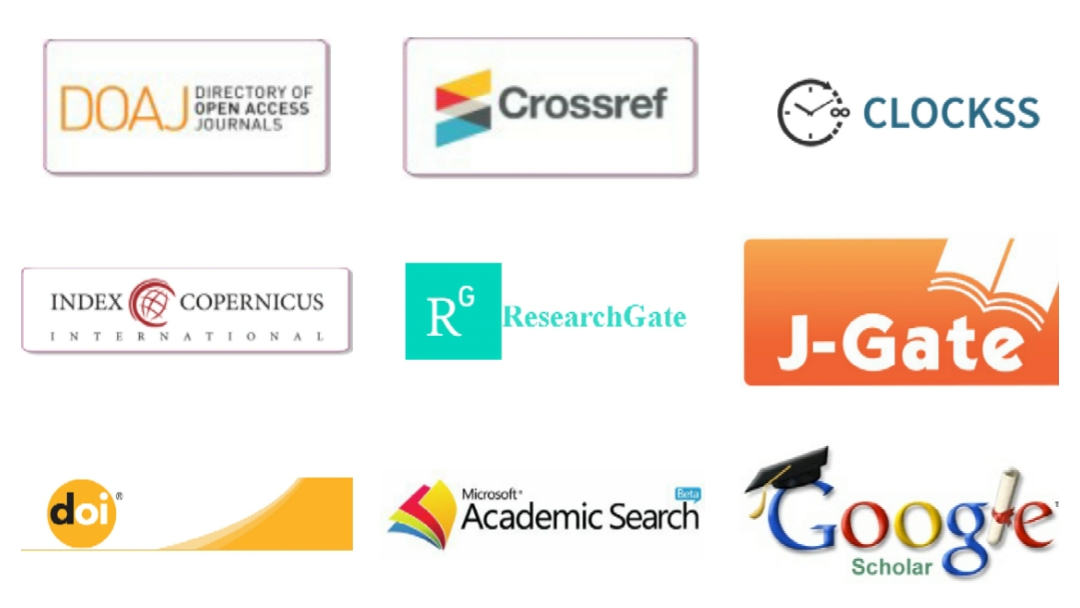Estimation of solar radiation power using reference evaluation of solar transmittance, 2 bands (REST 2) model (Case study : Semarang, Central Java, Indonesia)
DOI:
https://doi.org/10.14738/tmlai.23.210Keywords:
Estimation, Solar Radiation Power, REST 2, Renewable EnergyAbstract
Indonesia is a country which has abundant energy resources of solar demonstrated by potential position of solar annual migration (around equator line). Nowadays fossil energy consumption so apprehensively, these things are due to decreasing of fossil energy while demand of fossil energy rises continuously. In 2011, fossil fuel energy of Indonesia is 66.4% besides negative effect of increasing Greenhouse Gases concentrate, which is increasing of surface temperature and creates inconvenience environment. Sun as the biggest energy resource should be use optimally for Indonesia area. Diversification of energy is a final step to get another resource so release us of dependently fossil resources. Solar radiation is a green renewable energy which has the potential to answer the needs of energy problems on the period. Knowing how to estimate the strength of the solar radiation force may be one solution of sustainable energy development in an integrated manner. Unfortunately, a fairly extensive area of Indonesia is still very low availability of solar radiation data. Therefore, we need a method to estimate the exact strength of solar radiation. In this study, author used a model Reference Evaluation of Solar Transmittance, 2 Bands (REST 2). Validation of REST 2 model has been performed in Spain, India, Colorado, Saudi Arabia, and several other areas. But it is not widely used in Indonesia. Indonesian region study area is represented by the area of Semarang, Central Java. Solar radiation values estimated using REST 2 model was then verified by field data and gives average RMSE value of 6.53%. Based on the value, it can be concluded that the model REST 2 can be used to estimate the value of solar radiation in clear sky conditions in parts of Indonesia.References
Rahman, Shafiqur. (2007). Solar Radiation Over
Saudi Arabia And Comparisons With Empirical Models. Retrieved January 09, 2014, from Jurnal of Saudi Arabia Center.
Lorenz, Elke. (2013). Current status of solar PV
Power forecasting. Retrieved January 09, 2014, from Jurnal and Workshop Universitat Oldenburg : http://www.3e.eu/wp-content/uploads/2013/11/Lorenz_MeteoRES-Workshop_2013-11-19.pdf
PSD Climate Data Repository. (2011). Retrieved November 25, 2013, from Earth System Research Laboratory: http://www.esrl.noaa.gov/psd/data/gridded/data.ncep.reanalysis.html
AWS Center. (2013). Retrieved November 2013, from http://aws.bmkg.go.id/MetView/#dataquery
Gueymard, C. A. (2002). Direct solar transmittance and irradiance predictions with broadband models. Part I: detailed theoretical performance assessment. Solar Energy , 361.
Gueymard, C. A. (2009). Retrieved January 11, 2014, from Solar Consulting Service: http://www.solarconsultingservices.com/ReadMe_REST2_v7.1.txt
Index of /sat/GAME/2011. (2005, 11 17). Retrieved January 15, 2014, from Kochi University: http://weather.is.kochi-u.ac.jp/
Gueymard, C. A. (2011). Clear-sky irradiance predictions for solar resource mapping and large-scale applications: Improved validation methodology and detailed performance analysis of 18 broadband radiative models. Solar Energy .
Justus, C. G., & Paris, M. V. (1985). A Model For Solar Spectral Irradiance And Radiance at the Bottom and Top of A Cloudless Atmosphere. Journal of Climate and Applied Meteorology .
Mateos, D., Bilbao, J., Miguel, A. d., & Burgos, A. P. (2010). Prediction of Solar Irradiance And Illuminance Using REST2 Model. Valladolid, Spain.
Rahardjo, I., & Fitriana, I. (2006). Analisis Potensi Pembangkit Listrik Tenaga Surya di Indonesia. Strategi Penyediaan Listrik Nasional Dalam Rangka Mengantisipasi Pemanfaatan PLTU Batubara Skala Kecil, PLTN, Dan Energi Terbarukan , 43-52.
Rizwan, M., Jamil, M., & Kothari, D. P. (2010). Solar energy estimation using REST2 model. International Journal of Energy and Environment .






